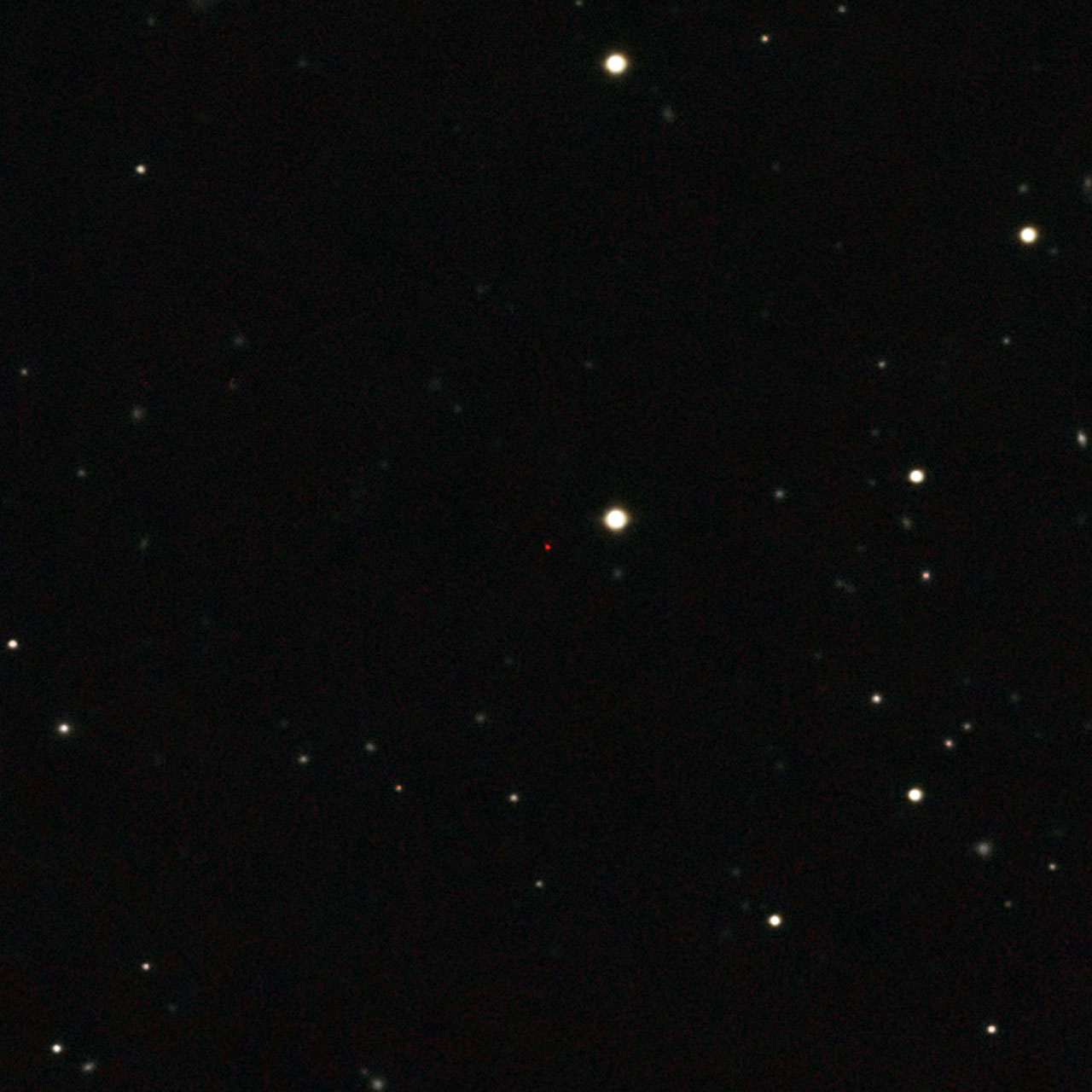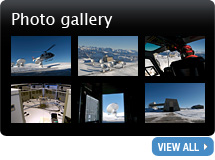News
Astronomers detect vast amounts of gas and dust around black hole in early universe
Using the IRAM Plateau de Bure array of millimetre-wave telescopes in the French Alps, a team of European astronomers from Germany, the UK and France has discovered a large reservoir of gas and dust in a galaxy that surrounds the most distant supermassive black hole known. Light from the galaxy, called J1120+0641, has taken so long to reach us that the galaxy is seen as it was only 740 million years after the Big Bang, when the universe was only 1/18th of its current age.
 |
| This image of J1120+0641 (red dot in the center) was created by combining survey data in visual and infrared light of the Sloan Digital Sky Survey and the UKIRT Infrared Deep Sky Survey. Credit: ESO/UKIDSS/SDSS. |
The Plateau de Bure array is made up of six 15-meter size telescopes that detect emission at millimetre wavelengths (about a thousand times as long as visible light) sited on the 2550-m high Plateau de Bure in the French Alps. The IRAM telescopes work together to simulate a single much larger telescope in a so-called interferometer that can study objects in fine detail.
A recent upgrade to the Plateau de Bure array allowed the scientists to detect the newly discovered gas and dust that includes significant quantities of carbon. This is quite unexpected, as the chemical element carbon is created via nuclear fusion of helium in the centres of massive stars and ejected into the galaxy when these stars end their lives in dramatic supernova explosions.
Bram Venemans comments: "It’s really puzzling that such an enormous amount of carbon-enriched gas could have formed at these early times in the universe. The presence of so much carbon confirms that massive star formation must have occurred in the short period between the Big Bang and the time we are now observing the galaxy.”
 |
| This image shows the bright emission from carbon and dust in a galaxy surrounding the most distant supermassive black hole known as seen by the Plateau de Bure array. |
From the emission from the dust, Venemans and his team were able to show that the galaxy is still forming stars at a rate that is 100 time higher than in our Milky Way.
The team gives credit to the IRAM upgrade that made the new discovery possible. "Indeed, we would not have been able to detect this emission only a couple years ago." says team member Pierre Cox, Director of IRAM.
Fabian Walter, a member of the team from the Max Planck Institute for Astronomy in Germany, is looking forward to when NOEMA is fully operational. The NOrthern Extended Millimeter Array (NOEMA) will be the successor of the Plateau de Bure observatory, an array of twelve 15-meter antennas which can be moved up to a maximum separation of 1,6 kilometers. “The current observations only provide a glimpse of what NOEMA will be capable of when we use it to study the formation of the first generation of galaxies", declares Walter. The construction of NOEMA will start this summer.
The related research paper can be found here.
MEDIA CONTACTS
Karin Zacher
Institut de Radioastronomie Millimetrique (IRAM)
Tel: +33(0)476 82 21 03
Email: zacher@iram.fr
Dr. Robert Massey
Royal Astronomical Society
Mob: +44 (0)794 124 8035
Email: rm@ras.org.uk
Dr. Klaus Jäger
Pressereferent / Press Officer im Vorstand der Astronomischen Gesellschaft
Tel: +49 6221 528 379
Email: pressereferent@astronomische-gesellschaft.de
Dan Cochlin
Media Officer (Faculty of Engineering and Physical Sciences)
University of Manchester
Tel: +44 (0)161 275 8387
Email: daniel.cochlin@manchester.ac.uk
SCIENCE CONTACTS
Dr. Bram Venemans
Max-Planck Institute for Astronomy
Heidelberg, Germany
Tel: +49 6221 528417
Email: venemans@mpia.de
Dr. Fabian Walter
Max Planck Institute for Astronomy
Heidelberg, Germany
Tel: +49 6221 528 225
Email: walter@mpia.de
Dr. Pierre Cox
Institut de Radioastronomie Millimetrique (IRAM)
Grenoble, France
Email: cox@iram.fr
NOTES
The team is composed of Bram Venemans (Max-Planck Institute for Astronomy [MPIA], Heidelberg, Germany), Richard McMahon (Institute of Astronomy [IoA], Cambridge, UK), Fabian Walter (MPIA), Roberto Decarli (MPIA), Pierre Cox (Institut de Radioastronomie Millimetrique [IRAM], France), Roberto Neri (IRAM), Paul Hewett (IoA), Daniel Mortlock (Imperial College London [Imperial], UK), Chris Simpson (Liverpool John Moores University, UK), Stephen Warren (Imperial).

